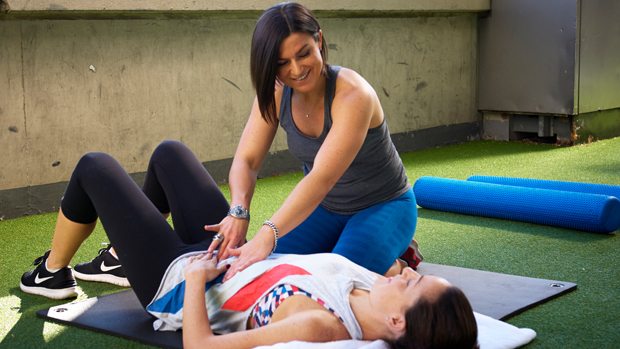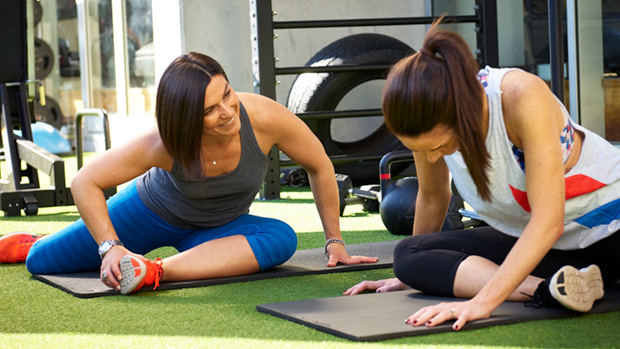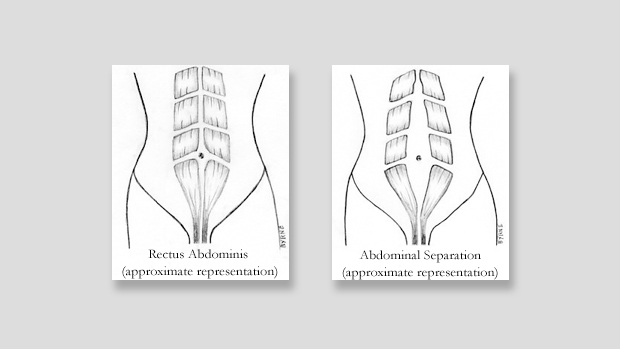Abdominal separation AKA Rectus Diastasis
(Diastasis meaning separation and Rectus referring to the rectus abdominus)
Abdominal separation is a very normal part of the child bearing process which a lot of women experience.
Some women have little to no separation but it is very common to have 2 fingers, in more severe cases it can be four or more fingers wide.
If you do have abdominal separation remember you are not alone in this journey.
To help understand what abdominal separation is we need to understand the anatomy of the core and abdominals.
Lets do a basic abdominal and core anatomy lesson.
Your abdominals are made up of four layers of muscle.
From the outside in you have
-Rectus abdomens (your six pack) these are responsible for trunk flexion and extension.
Below that you have your external obliques and then your internal obliques.
Your obliques are responsible for rotation of the trunk and work together.
Below these are the Transverse Abdominus, your deepest layer of abdominal muscle which is a corset like muscle that makes up part of your core musculature and provides support for your spine.
Now we understand the abdominals we’ll move onto the core
Lets imagine a woman’s core is like an upside down water bottle.
The top is your diaphragm, the bottom your pelvic floor, at the back you have small stabiliser muscles known as multifidus and your Transverse abdominus that wraps around.
For us to really understand what abdominal separation is you need to know they all share a connective tissue called the Linear Alba.
So what is your Linea Alba?
The Linear alba runs down the middle of the abdominal wall and joins all the abdominal muscles.
This is an important point to remember as its not just your “six pack” that shares the Linear Alba its each layer of your abdominal muscles.
During pregnancy the increasing size of the baby puts pressure on the abdominal muscles causing them to stretch.
Abdominal separation occurs when the strain on the linear alba is so great that it stretches beyond its capability, the two sides of the rectus abdominus are forced apart causing the linear alba to seperate.
This allows more space for the baby to grow.
So where to from here?
There are safe exercises you can do that will help strengthen your abdominal wall and encourage the separation to close. But remember not all exercises are created equal and when dealing with abdominal separation its best to treat yourself and your abdominals with the same care you would if you were still pregnant.
That means no crunching, no twisting and no large movements that cross the body.
If no separation is present you still need to be very cautious with the exercises you perform.
Due to weakened abdominal muscles and lack of abdominal strength there is increased potential for injury and I would encourage you to treat your body with the same care as someone who was experiencing it.
Even if you have been checked for Abdominal separation by a health or fitness professional my advice to any woman who has had children will always be to see a specialist womens health physio and have both your pelvic floor and abdominal separation checked.
This is by far the best, most in-depth and accurate measure available when assessing pelvic floor health and abdominal weakness.



